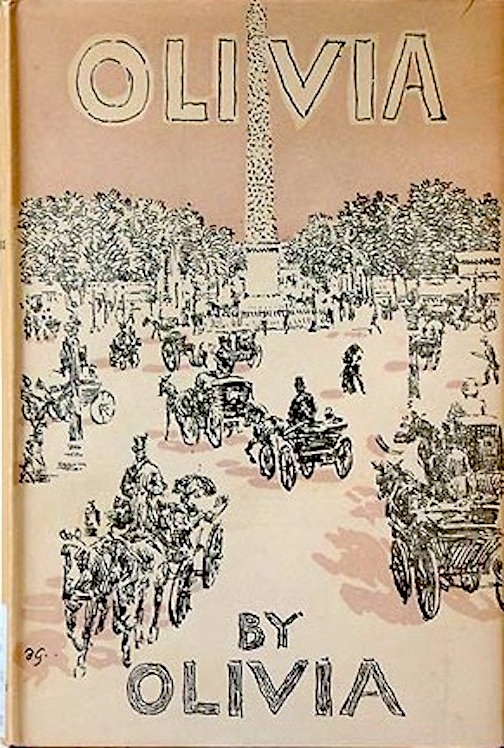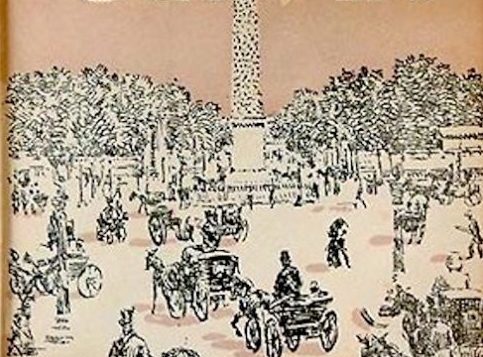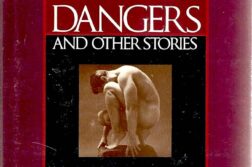AMID THE CHAOS and uncertainty of the election and spiking Covid numbers, I received a copy of a new edition of Dorothy Strachey’s classic Sapphic novel, Olivia, with an introduction by André Aciman (author of Call Me By Your Name). I recalled reading the book in my twenties when I was attempting to figure out my sexuality. At that time (the 1970s), a friend had given me a rather worn copy that she’d found at the back of a bookstore on one of those clandestine magazine racks that overflowed with “pulp fiction.” Desperate for any reading material that hinted at lesbian desire, I virtually devoured the book.
Years have passed since my first encounter with Olivia. Her return to my life in these unprecedented times has motivated me to do some research into the life of the author and the novel itself, as well as its literary reception and its contribution to our understanding of the nature of first love as Sapphic desire. Dorothy Strachey was born in 1865 and died in 1960. She was the sister of Lytton Strachey, one of the founding members of the Bloomsbury Group and the author of Eminent Victorians, and of James Strachey, who translated the works of Sigmund Freud. In 1903, she married the French painter Simon Bussy, with whom she had a daughter, Jane.
As a young girl, Dorothy attended Marie Souvestre’s boarding school for girls at Les Ruches in Fontainebleau, France. Natalie Barney also attended this school. Souvestre had founded it with her female partner years earlier. When she separated from her partner, she moved the school to England and set up the Allenswood Academy. At fifteen, Eleanor Roosevelt attended Allenswood and later described her three years there as “the happiest time in her life.” Dorothy Strachey was actually a teacher at Allenswood when Eleanor was in attendance.
 Strachey was a very close friend of André Gide. She translated his works into English and engaged in a lengthy correspondence with him over many years. In 1934, she gave Gide Olivia to read. Gide reportedly didn’t think much of the work, describing it as “not very engaging.” (But then, Gide had also dismissed Proust back in 1909.) This criticism wounded Strachey deeply, and she put the manuscript in the proverbial bottom drawer until 1948 or ’49, when she published the book with Leonard Woolf’s Hogarth Press. She was in her eighties at the time of publication and did not publish it under her own name. Instead, the book was anonymously attributed to “Olivia.” An added dimension to the story is that Olivia was the name of a sister who died as a baby. Thus both the main character and the book’s pseudonymous author bear the name of this deceased family member, though subsequent editions have identified Strachey as the author. Indeed the book has been in and out of print since 1949. In 1951, a French film was made of Olivia, directed by Jacqueline Audry.
Strachey was a very close friend of André Gide. She translated his works into English and engaged in a lengthy correspondence with him over many years. In 1934, she gave Gide Olivia to read. Gide reportedly didn’t think much of the work, describing it as “not very engaging.” (But then, Gide had also dismissed Proust back in 1909.) This criticism wounded Strachey deeply, and she put the manuscript in the proverbial bottom drawer until 1948 or ’49, when she published the book with Leonard Woolf’s Hogarth Press. She was in her eighties at the time of publication and did not publish it under her own name. Instead, the book was anonymously attributed to “Olivia.” An added dimension to the story is that Olivia was the name of a sister who died as a baby. Thus both the main character and the book’s pseudonymous author bear the name of this deceased family member, though subsequent editions have identified Strachey as the author. Indeed the book has been in and out of print since 1949. In 1951, a French film was made of Olivia, directed by Jacqueline Audry.
The story of Olivia is set in a girls’ boarding school in France that’s reminiscent of Madame Souvestre’s Les Ruches, where Strachey was both a student and a teacher (i.e., at Allenswood). The school is a “hot house” of unacknowledged Sapphic desire. The girls are at the age of their “spring awakening.” Olivia, age sixteen, becomes infatuated with one of the headmistresses, Mademoiselle Julie, who introduces our protagonist to culture, cuisine, philosophy, and, most important of all, “first love.”
Strachey’s depiction of Olivia’s sexual and erotic longings is what makes this novel remarkable. Olivia’s “thinly veiled passions” erupt into all that goes with first love: obsession, jealousy, idealization, longing, endless waiting, despair, disillusionment. Strachey takes the reader through all of these stations of the cross of first love. Olivia has no words for what she feels for Julie. All she knows is what her body feels and how her body craves Julie.
Much has been written on the origins of Olivia. Strachey may have been influenced and inspired by Colette’s Claudine at School (1900) or the film Mädchen in Uniform (1931), directed by Leontine Sagan and written by Christa Winsloe. My belief is that the novel is autobiographical fiction. Strachey has written a fictionalized memoir using places and persons from her past as characters in the narrative. She was known to be bisexual, and she had an affair with Lady Ottoline Morell.
Olivia can be read as a bildungs-roman with a twist. The protagonist leaves childhood and emerges into adulthood not as a heterosexual woman ready for marriage but instead a women of Sapphic sexuality. By the end of the novel, Olivia has lived through and survived first love, having learned for herself the truth of Pascal’s dictum about the heart having its reasons that Reason does not know. Dorothy Strachey dedicated Olivia “To the beloved memory of V.W.” (Virginia Woolf).
Irene Javors is a psychotherapist based in New York City.






